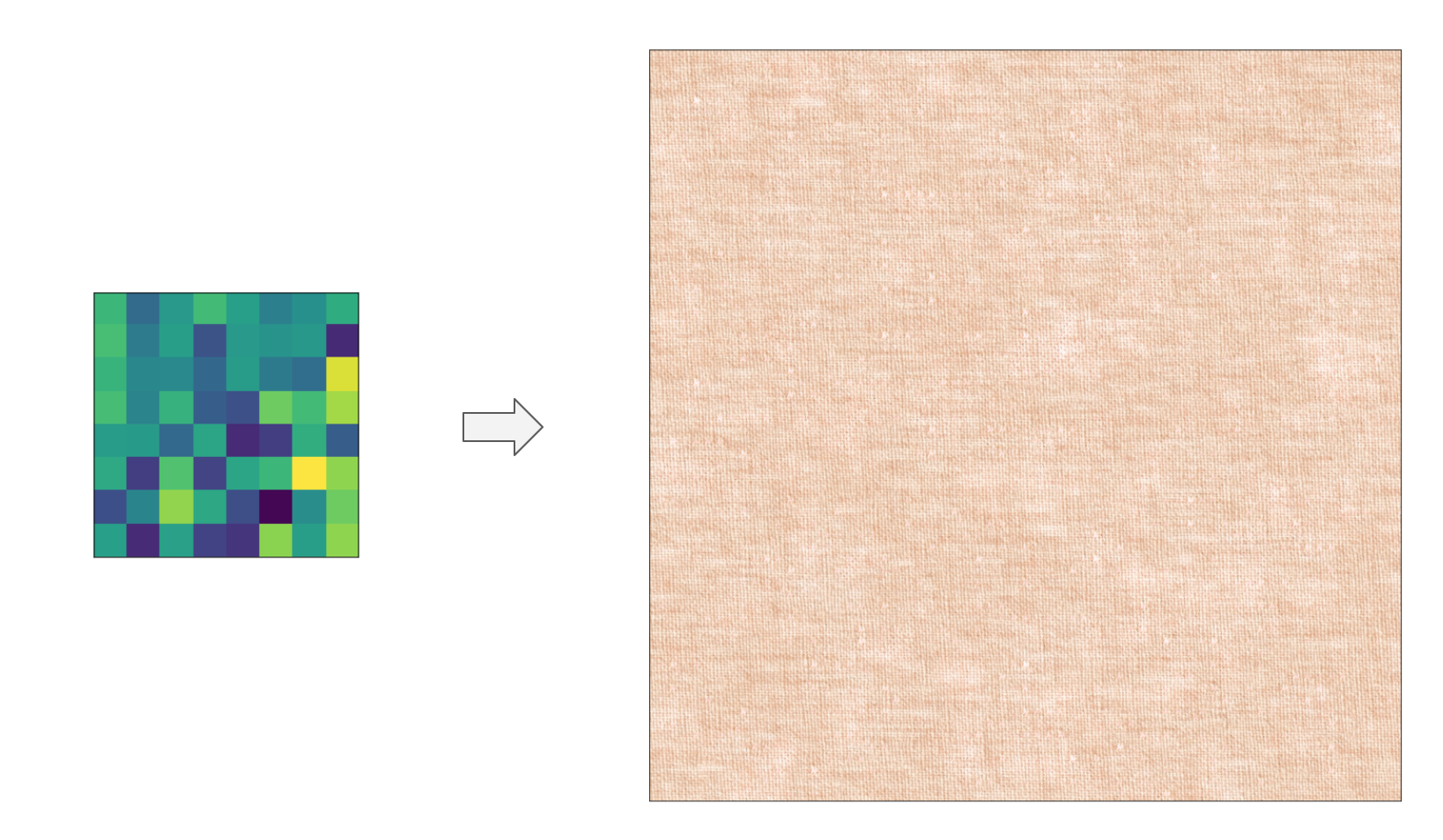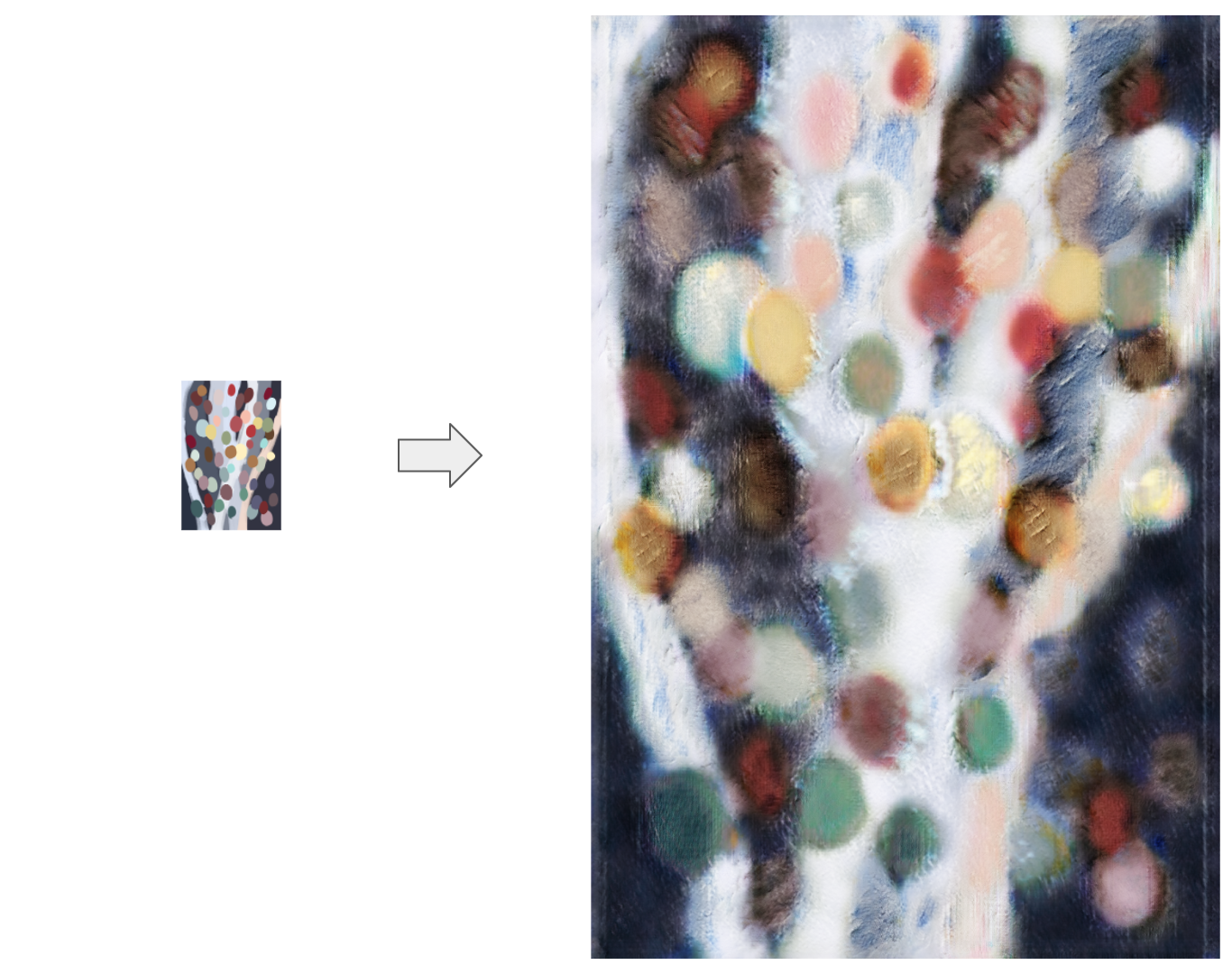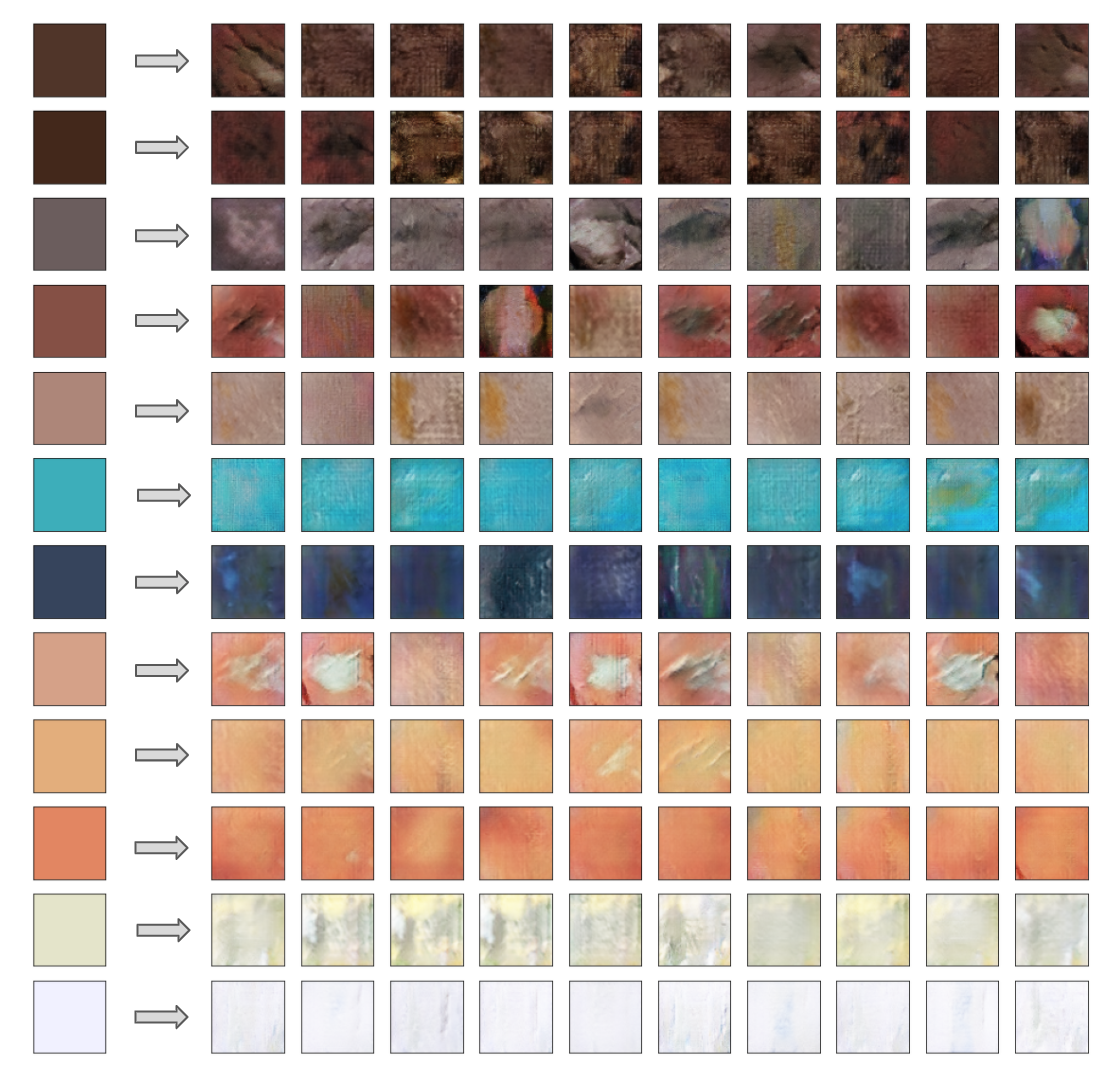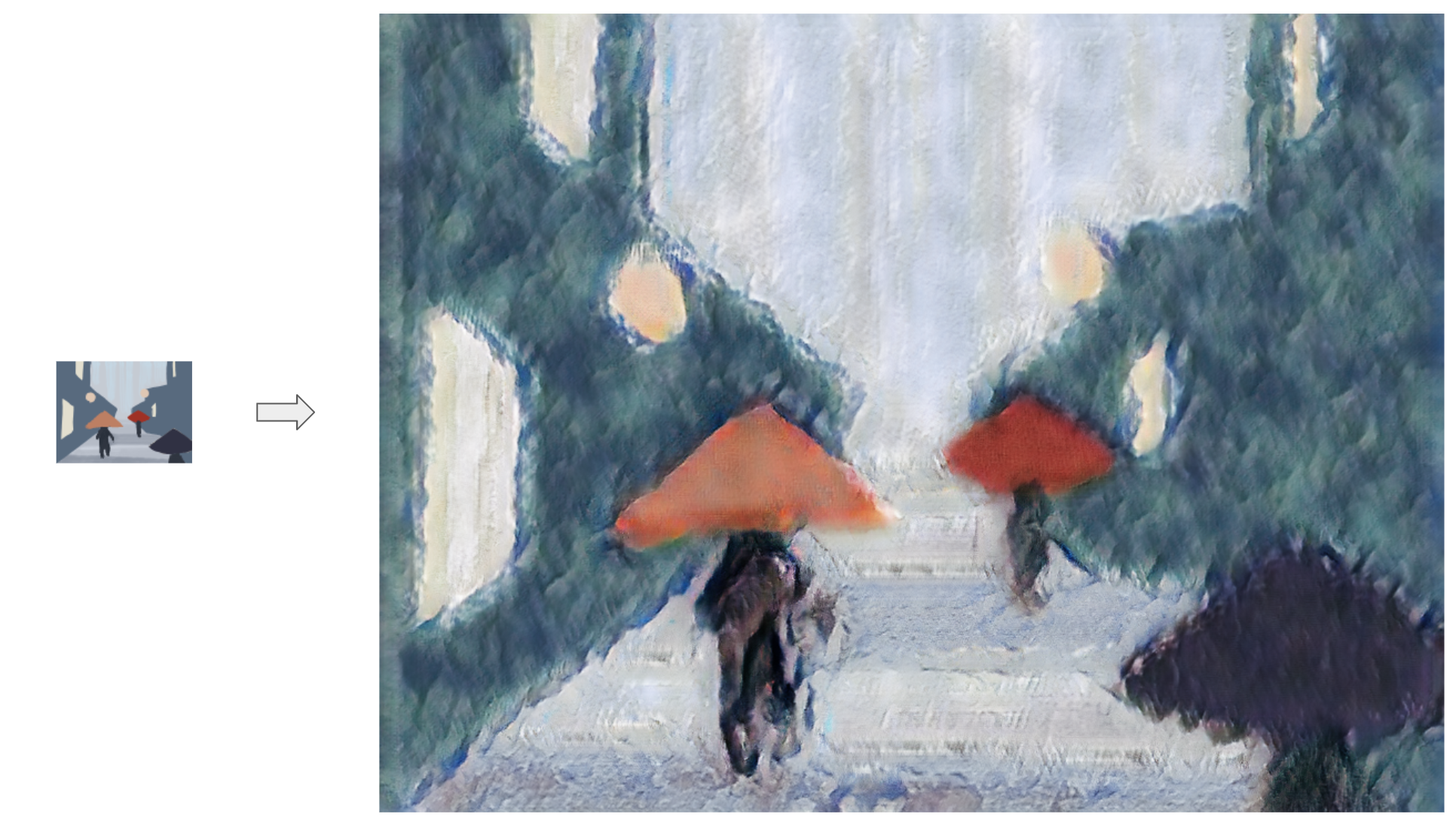In the previous post we’ve developed a texture generating GAN that is able to convert a small patch of noise to a higher resolution texture:

Using the same networks, I created an application that can convert a small drawing with color blobs into a higher resolution textured painting:

In this example, I used random crops from some of my paintings to train the networks, so the generated image has painting-like textures. After the networks are trained, I run many many random sampling of the GAN to create a “palette” of what the GAN is capable of generating. This palette is basically a mapping from the average color of a particular type of texture to a list of latent codes, something like: (in this visualization, I pass the latent codes through the generator to get some sample textures)

One interesting thing I observed when creating this palette is that I have a preference for a subset of colors in my painting. There’re few very saturated colors and I like brown, orange, red, blue more than green. While in general I think this is true, some mode collapse of the GAN probably also contributed.
The rest is easy: using the palette, we can convert an image input to the spatial latent code, sample some noise, and pass it through the generator. Code for creating the palette and generating images can be found here.
One pretty obvious artifact of the approach is at the boundary of two different types of texture. Since at training time, the generator is only trained to create uniform texture through out the image, it’s expected that the network doesn’t know how to handle texture changes. I applied some Gaussian blurring to the latent map so that the changes in texture is smoother, which also results in the generated image seeming blurry at boundaries.
I experimented with sampling two types of textures at training time, although the difference is hard to quantify. Here’s an example from this model:

